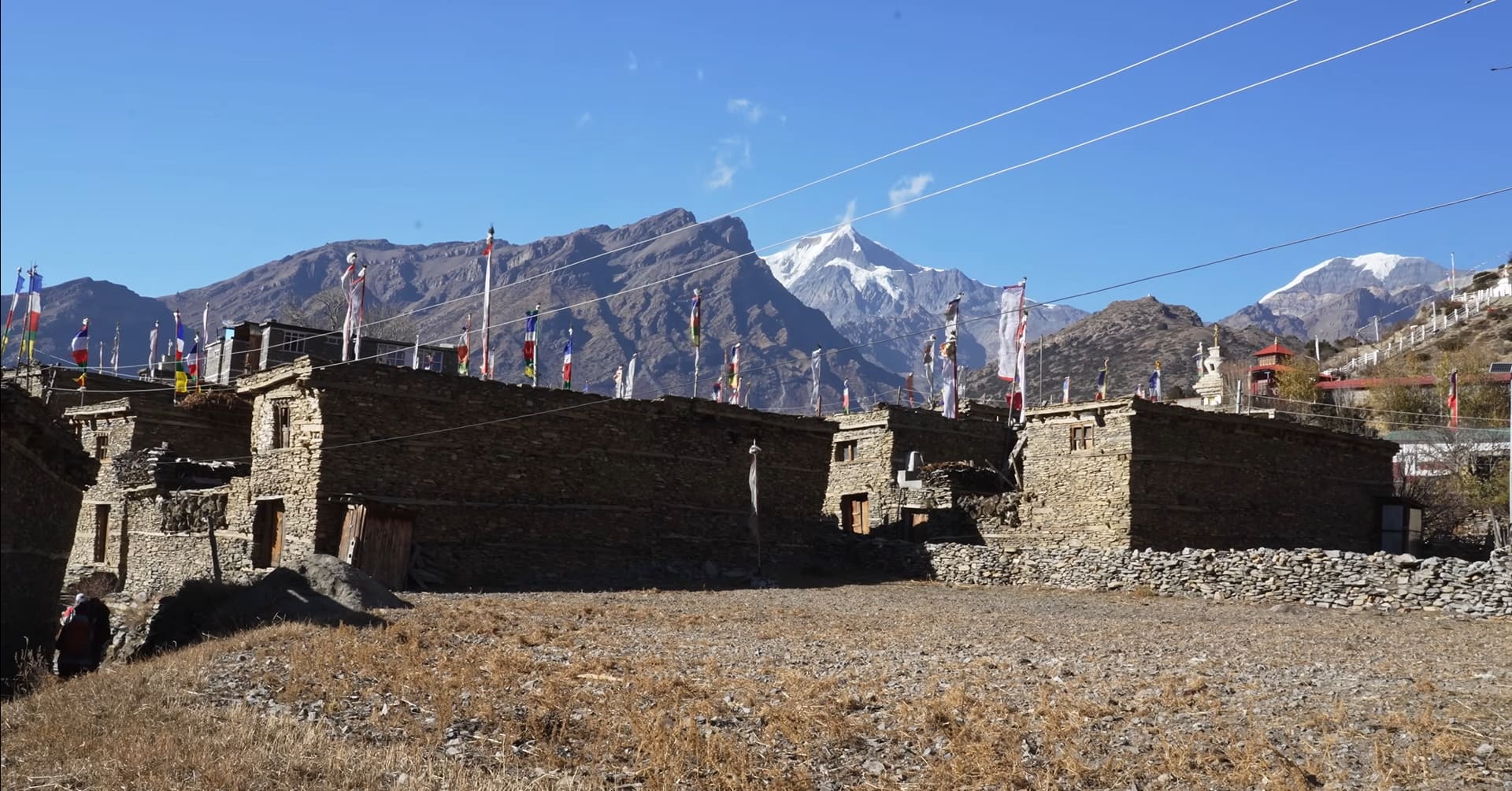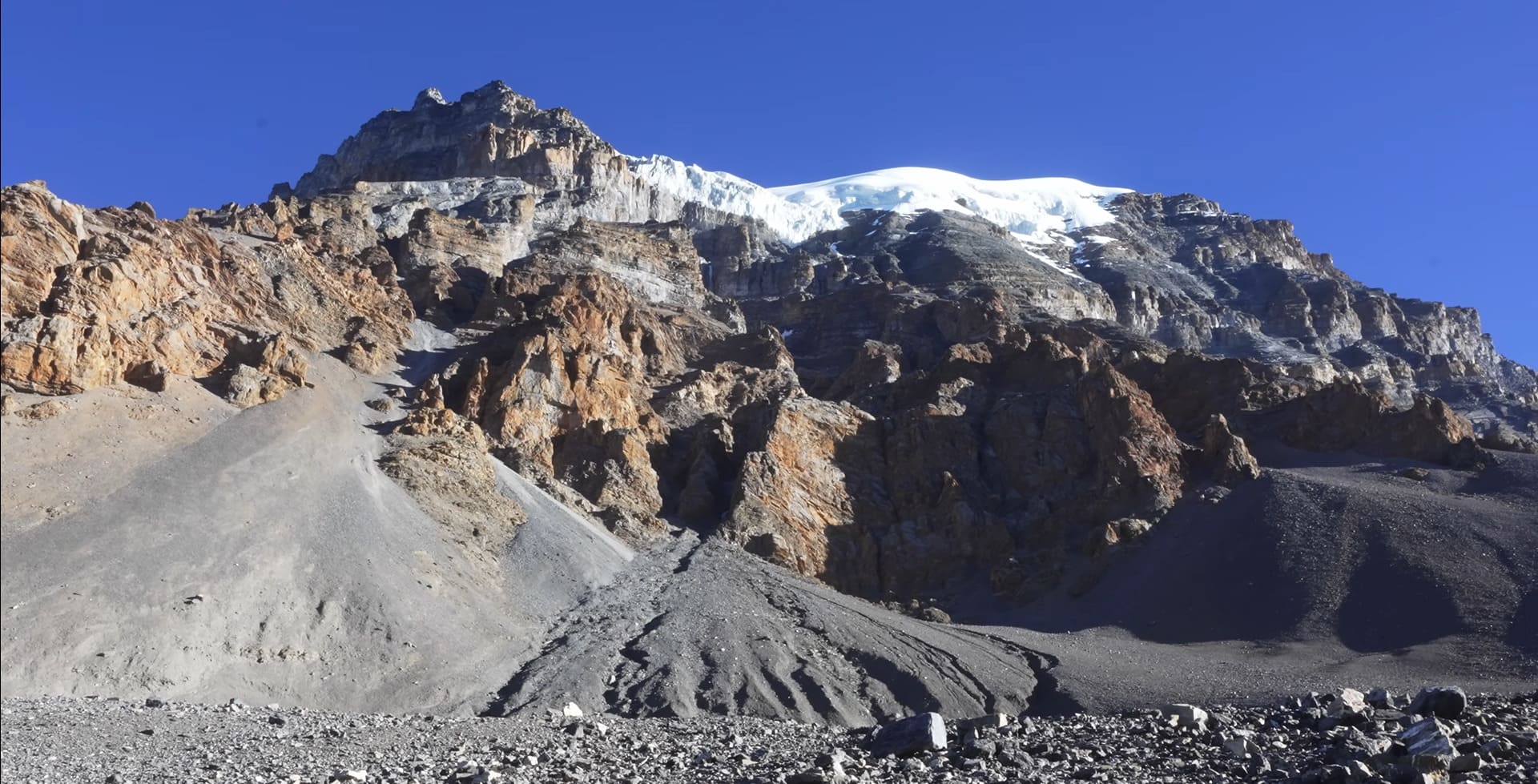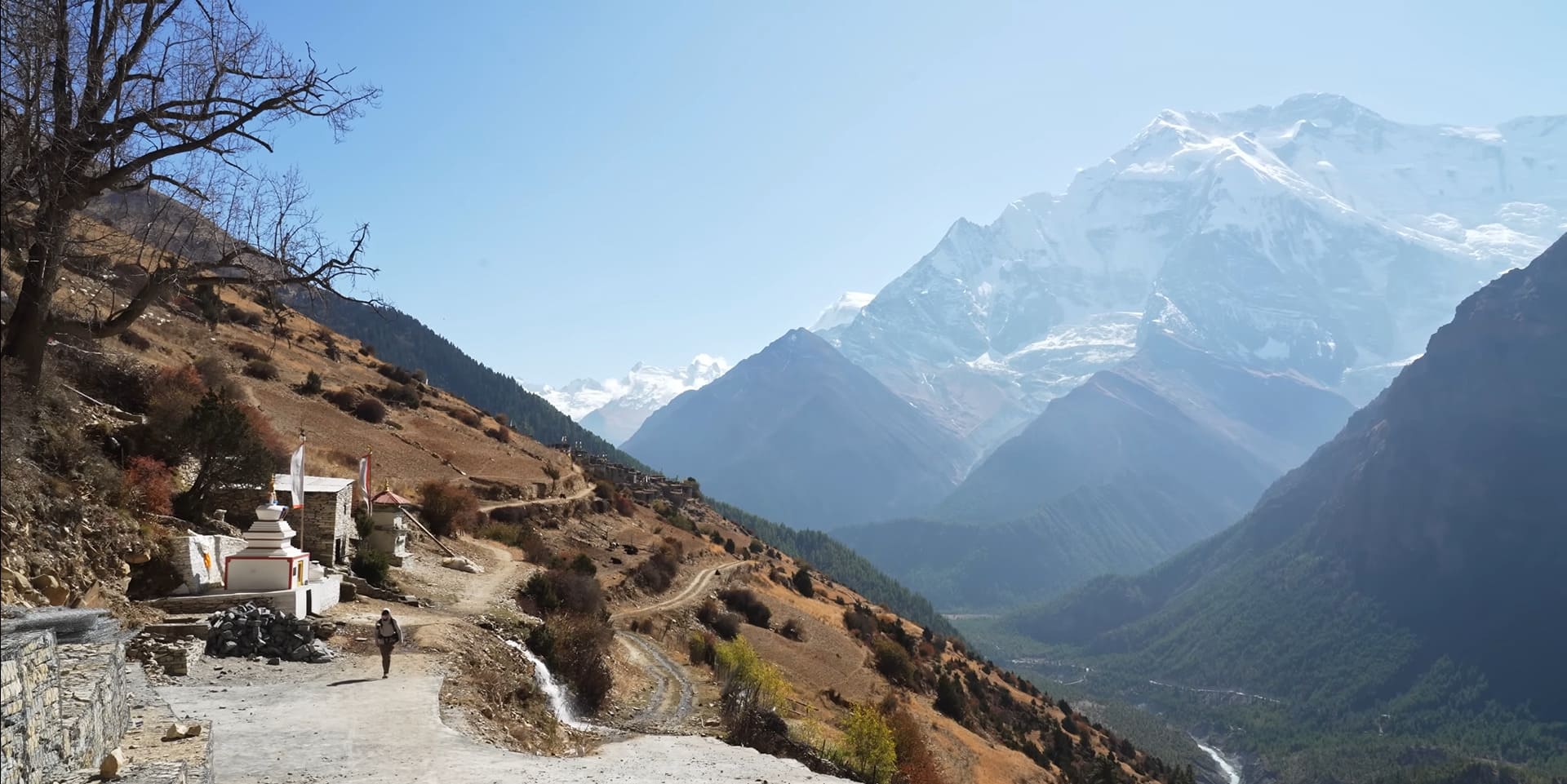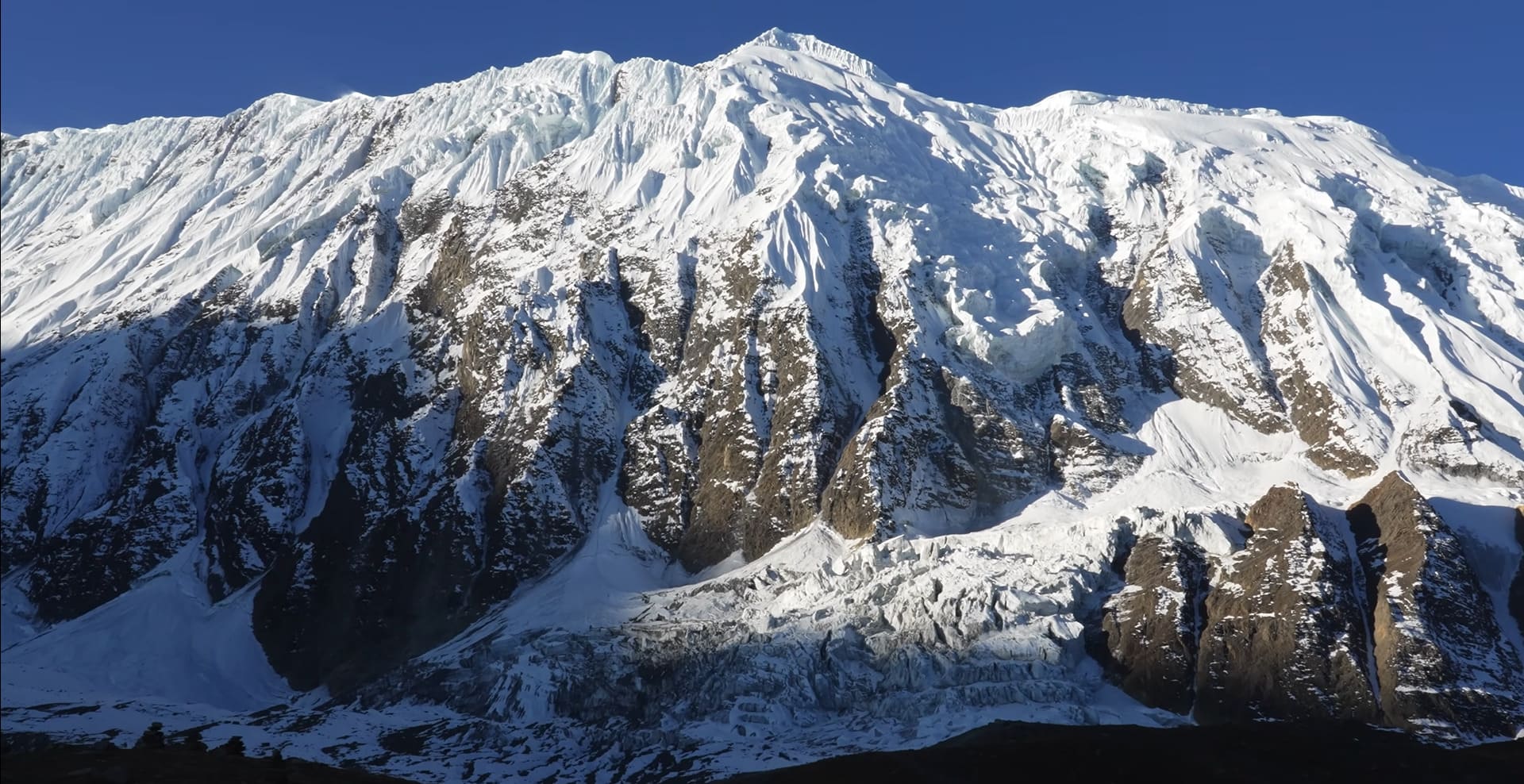The Annapurna Circuit Trek is a classic and extremely rewarding trekking experience in Nepal that blends natural beauty, cultural wealth, and adventure in a manner that's difficult to surpass. The trek, which stretches for approximately 160–230 kilometers based on the path followed, sweeps you through lush subtropical forests, terraced fields, quaint villages, and rugged high-altitude landscape to the spectacular Thorong La Pass (5,416 m).
The trek is renowned for its breathtaking panoramic views of the Annapurna and Dhaulagiri ranges and mountains like Machapuchare (Fishtail) and Annapurna South. The trekkers on the route witness a rich mosaic of ethnic cultures, including Gurung, Thakali, and Manangi groups, and are treated to traditional Nepalese hospitality in teahouses and lodges that dot the trail.
One of the highlights of the trek is the dramatic change of landscapes and climatic zones. You ascend steadily from the green, warm valleys through temperate forests, alpine meadows, and rocky highlands to cross Thorong La Pass, which offers a surreal Himalayan vista. The descent into the Marpha and Jomsom regions introduces dry landscapes and the fascinating Kali Gandaki Gorge, one of the deepest gorges in the world.
The Annapurna Circuit Trek is suitable for moderately experienced trekkers who are physically fit, as it involves extended walking days, high altitudes, and inclement weather. It requires 14–21 days to complete, depending on the itinerary and acclimatization breaks. Beyond the adventure, the trek promises an experience of the very best of Nepal's natural beauty and cultural wealth, making it a bucket-list trek for trekkers worldwide.
About Thorong la pass
Thorong La Pass is one of the highest trekking passes in the world, standing at an altitude of 5,416 meters (17,769 feet) above sea level. It is the highlight and the most challenging section of the Annapurna Circuit Trek, connecting the Manang Valley to the east and the Muktinath region to the west. Its traversal is considered a remarkable achievement for trekkers due to its altitude, steep slopes, and generally unpredictable weather.
The hike to Thorong La begins early in the morning to avoid severe winds and sudden weather changes. Trekkers depart before daybreak to reach the pass by late morning. The ascent is steep and requires careful acclimatization in Manang or other high villages in the area to prevent altitude sickness. The view from the pass is absolutely stunning snow-capped peaks of the Annapurna and Dhaulagiri ranges stretch along the horizon, giving a sense of thrill and accomplishment.
After crossing Thorong La, trekkers descend to the Kali Gandaki Valley, trekking amidst dry landscape, quaint villages, and monasteries. Along the way, you also pass through one of the world's deepest gorges, carved by the Kali Gandaki River. The crossing of Thorong La is not merely a physical feat; it is a spiritual one for many as well, since the region near Muktinath is sacred to Hindus and Buddhists.
Thorong La pass requires preparation, acclimatization, and hiking experience, but the payoff is well worthwhile: breathtaking scenery, a sense of achievement, and a lifetime high-altitude experience in the heart of the Himalayas.
Gurung Community
The Gurung people are one of Nepal's most prominent and culturally rich ethnic groups, who primarily inhabit the central and western hilly regions, among others along the Annapurna Circuit Trek, i.e. Manang, Pisang, Khangsar. They are renowned for their warm hospitality and strong community ties, and the Gurungs have deep affection for their traditions, festivals, and the mountainous terrain that they inhabit.
Gurungs are farmers, warriors, and skilled mountaineers by tradition. Many of them have been enlisted in the British and Indian Gurkha regiments and are renowned for their courage and discipline. Their villages, comprising stone houses with slate roofs, terraced fields, and Buddhist-style chortens and monasteries, reflect a fine blend of Hindu and Buddhist influences.
Gurung culture is rich in music, dance, and rituals, and festivals like Tamu Lhosar (the Gurung New Year) are observed with vibrant dances, traditional songs, and large feasts. Even their social life is structured around communal decision-making, respect for elders, and a strong emphasis on cooperation and sharing within the village.
For trekkers, a visit to the Gurung community is a genuine cultural experience. Staying in their villages provides a glimpse into their daily lives—farming, animal husbandry, cooking traditional meals, and following ancient traditions. Their warmth and hospitality make trekking in Gurung regions not only a visual experience but also a cultural discovery of Nepal's rich heritage.
Why do the Annapurna circuit trek?
The Annapurna Circuit Trek has long been a required trek for novice and experienced trekkers alike, and for good reason. First, it offers unparalleled natural beauty, from fertile subtropical forests and terraced fields to stark high-altitude landscapes and snow-capped Himalayan peaks. The trek offers breathtaking vistas of such iconic mountains as Annapurna, Dhaulagiri, Machapuchare (Fishtail), and Nilgiri, each day on the trail a visual feast.
Other than the scenery, the trek is also a cultural experience. You will pass through diverse Gurung, Thakali, and Manangi villages, witnessing unique traditions, rituals, and lifestyles. Staying in local teahouses offers real experiences of Nepalese hospitality, local cuisine, and close interaction with locals, giving you a deep insight into Himalayan culture.
The Annapurna Circuit is also a thrilling experience. The trek over the Thorong La Pass (5,416 m), one of the highest trekking passes in the world, is arduous but immensely rewarding. The trek allows you to test your physical endurance and stamina and provides a feeling of accomplishment that few other experiences can.
How to reach the Annapurna Circuit Trek Starting Point?
The traditional beginning point of the Annapurna Circuit Trek is Besisahar, which is a town in Nepal's Lamjung District. Here, the trekkers initiate the gradual ascent along the Marsyangdi River to the higher elevations of the trail.
From Kathmandu (Capital City of Nepal)
By Road
The most sought-after mode is by taking a tourist bus or a private vehicle from Kathmandu to Besisahar. The journey takes around 6–8 hours, depending on the road conditions. The route is scenic through beautiful landscapes, charming towns, and terraced field hills, which gives a picturesque preview of the region. The roads can be a little rugged in some patches, and it is therefore not unusual to hire a private jeep or SUV for convenience.
By Air
Domestic flights connect Kathmandu to Pokhara. From Pokhara, local bus or taxi can be taken to Besisahar, a 3–4 hours ride. It is convenient if you want to reduce the duration of travel or skip long road journeys.
From Pokhara (Gateway to Annapurna Region)
Pokhara is one of the most popular starting points for the majority of trekkers. From Pokhara, you can travel by a local bus or hire a jeep to Besisahar, which is approximately 115 km from Pokhara. It takes around 3–4 hours to travel along the beautiful Marsyangdi River valley.
Permits for Annapurna Circuit Trek
Annapurna Conservation Area Permit (ACAP)
Annapurna Conservation Area Permit (ACAP) is mandatory for every visitor in the Annapurna region. The permit is issued to help preserve the natural environment and cultural heritage of the region. ACAP sustains trekkings while helping local communities. The price of the permit is approximately 3,000 NPR for foreigners, though it may slightly differ depending on nationality.
The ACAP permit can be obtained by trekkers in Besisahar, Kathmandu, or Pokhara prior to the trek. It is recommended that trekkers carry a photocopy of the permit since it may be asked for at various checks on the way.
Trekkers' Information Management System (TIMS) Card
The TIMS card is a mandatory registration for every foreign trekker in Nepal. Its primary purpose is to monitor trekking activity and offer security in trekking destinations. The card is required to be carried by individual trekkers and groups.
The cost of the TIMS card is about 2,000 NPR for individuals and 1,000 NPR per person in groups of five or more. TIMS cards are available from Kathmandu, Pokhara, or Besisahar. Like ACAP, it is advisable to carry a copy of your TIMS card on the trek as authorities may require it at certain stages along the route.
Tips for Trekkers
If you hire a guide or trek with an agency, they usually organize permits as part of the service, so you save your effort and time. Please make sure your passport is valid, as ACAP and TIMS require passport details. Trekking without these permits is illegal and will result in penalties or a ban on the trail.
What are the best seasons to do the Annapurna Circuit Trek?
Spring (March to May)
Spring is a popular season for trekking in the Annapurna region. The weather is normally mild and sunny at this time of year, giving great views of the Himalayan peaks. The valleys and forests along the path come into bloom as the rhododendrons flower and the hillside is colored in shades of red, yellow, and pink by flowers, so the landscape is spectacular. The weather is pleasant for trekking, though higher regions like Thorong La Pass are cool.
Autumn (September to November)
Autumn is the most general season to trek the Annapurna Circuit. After the monsoon rains, skies are usually clear and cool, with excellent views of the mountains. Weather is settled, temperature is comfortable, and trails are dry, minimizing trekking challenges and hazard. Autumn also provides ideal weather for photography as air is clean and clarity is excellent throughout the trek.
Winter (December to February)
Trekking in winter is possible but challenging due to cold temperatures and snow at higher altitudes. Lower regions of the trek remain traversable, but regions above 4,000 meters, like Thorong La Pass, can be snowy and risk frostbite or avalanches. Winter trekking is suitable for those seeking solitude and fewer trekkers, but good altitude gear is required.
Monsoon (June to August)
The monsoon season is not recommended for the Annapurna Circuit Trek. Monsoon rain causes landslides, slippery roads, and leeches, especially in lower forested tracts. Rivers and streams swell, and river crossings become dangerous. Moreover, the weather remains mostly cloudy, reducing visibility and obscuring mountain views. However, monsoon trekking has its rewards for experienced trekkers who wish to experience green countryside and few tourists.
Cultures and Traditions of the Annapurna Circuit Trek
Diverse Ethnic Communities
The Annapurna Circuit Trek crosses over an affluent ethnic culture of individuals, including the Gurung, Thakali, Manangi, and Tibetan-influenced settlements. Each community has its own language, culture, and way of life, giving trekkers an exclusive experience of Nepal's ethnic diversity. Villages like Ghandruk, Chomrong, and Manang are renowned for maintaining traditional housing, communal way of life, and cultural traditions handed down through generations.
Religious Traditions
The region is a combination of Hinduism and Buddhism, with many villages having Buddhist prayer shrines (chortens), monasteries, and Hindu temples along the trekking path. Places like Muktinath are sacred for both Hindus and Buddhists and attract pilgrims from all over Nepal and India. Prayer flags, monasteries, and mani walls are routine to see, symbolizing spiritual devotion and native traditions.
Festivals and Rituals
Festivals play an important role in the life of locals. For example, Tamu Lhosar (Gurung New Year) is observed by the Gurung community through festive dances, music, and feasts. Similarly, the Thakali community also observes their respective culture-related events that involve rituals, customary food, and group functions. Trekkers who happen to pass through during festivities generally have a chance to witness multicolored apparel, traditional dances, and colorful native rituals.
Traditional Lifestyle
Along the way, many locals engage in agriculture, animal rearing, and commerce as major sources of livelihood. Terracing of land, yaks grazing on mountain slopes, and slate-topped stone houses testify to their adaptation to the mountainous environment. Hospitality is a hallmark of the region trekkers sleep in teahouses, where locals offer traditional fare of dal bhat, momo, and thukpa, providing a taste of genuine Himalayan life.
Art and Handicrafts
The Annapurna Circuit villages are also renowned for handicrafts and paintings. Hand-woven clothing, prayer flags, wood carvings, and traditional jewelry are viewed and purchased in local villages. These handicrafts show religious symbolism and cultural heritage and provide a tangible feel of being connected to the local culture.
Accommodations During the Annapurna Circuit Trek
Along the Annapurna Circuit Trek, there is a choice of teahouses and lodges for different budgets. These teahouses are simple family-run establishments with plain rooms having beds, blankets, and in some cases, shared facilities. Higher-altitude settlements like Manang and Thorong Phedi have limited choice, and rooms are often warmed by wood fires in winter.
Most teahouses do have private rooms and dormitory facilities so that solo travelers, couples, and groups can all be catered to. It is not only easy to sleep in teahouses but also a true cultural experience since you are living among local families and other travelers from across the globe.
Tips
- Reservations are generally not required in lower or mid-altitude regions but can be an issue at high-altitude locations near Thorong La, particularly during high season.
- Pack a sleeping bag since blankets are not always sufficient, and particularly not during winter.
- The lodging is basic; hot showers at some of the destinations are available but may be an extra charge.
Foods Options During Annapurna Circuit Trek
Meals on the Annapurna Circuit are diverse and substantial, designed to provide energy for days of extended trekking. There's a mix of Nepali, Tibetan, and Western cuisine in most teahouses.
Some common Nepali dishes include:
Dal Bhat – The Nepali staple of rice, lentil soup, vegetables, and maybe meat. It's filling and served in almost all teahouses.
Momo – Fried or steamed Nepali-style dumplings filled with vegetables or meat.
Thukpa – Tibetan noodle soup, best to warm the body when it is cold outside.
Vegetable and Meat Curry – Rice or bread alongside it serves as a satisfactory lunch or dinner.
Snacks and Beverages
- Energy bars, biscuits, and chocolate are available in bigger villages.
- Hot drinks like tea, coffee, and hot chocolate warm up trekkers at high altitudes.
- Bottled water and water purification are also options, but a refillable bottle is strongly recommended.
Food becomes a bit more costly with altitude, and options become less in remote villages. Basic, high-calorie foods and drinking plenty of water are crucial for acclimatization and energy during the trek.











